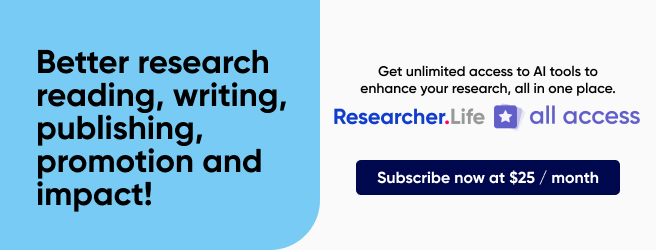Behind the scenes: A journal editor's insight into what happens post manuscript submission
A manuscript’s journey from an editor’s perspective
Many authors do not know exactly what goes on behind the scenes in a journal’s editorial office, from manuscript submission to final decision. In this series of posts, an experienced journal editor tells us more about the editorial structure of a journal as well as its evaluation and decision-making processes. This series sheds light on the factors that are at play during manuscript publication, how editorial decisions are made, and what the sequence of events in the publication process is.

Journal publications are an important part of the propagation of results and ideas. Papers in prestigious journals reflect well on their authors, and serve to provide a full, detailed and peer-reviewed description of their research. Yet, the process from submission to decision is opaque. A researcher typically submits their manuscript to a journal and then waits months (sometimes many months) before receiving a set of reviews and a decision on whether the journal will pursue publication of the submission. It is far from obvious to the researcher exactly what is going on during this time.
The purpose of this article is to shed more light on this process, by describing the typical sequence of events from the perspective of the Associate Editor (AE). The hope is that this serves multiple purposes:
- To help authors understand the process, and allow them to make their submissions with this knowledge.
- To help journal reviewers understand their role in the process, and how they can be most effective in helping to determine the right outcome for a submission.
- To help me (and, by extension, other associate editors) think of the process more clearly, and optimize our role within it.
The AE’s role in the editorial structure
The editorial structure of a journal varies between titles, depending on the size of the journal, number of submissions received, etc. but in general there is an editorial board which consists of an Editor-in-Chief (EiC) and multiple Associate Editors. The role of this board is to determine which submissions to accept for publication in the journal.
In general, the EiC receives new submissions and allocates these to AEs for handling through the review and decision-making process. The AE’s main task is to make editorial recommendations to the EiC about what decision should be made on submitted manuscripts.
To accomplish this, the AE has a seemingly simple set of responsibilities: to obtain referee reports for each manuscript they are assigned and use these to make their recommendation for the manuscript, in a timely fashion. The execution of these tasks however requires a substantial amount of effort; moreover, this effort is concentrated in areas that might not be initially obvious. To explain this, I will describe the detailed sequence of steps that I follow between receiving a new assignment and providing my recommendation. Different AEs will no doubt have different approaches to the job.
Assigning an AE
When a manuscript is submitted to a journal, it receives some attention before being assigned to an AE for handling. The EiC, and possibly an editorial assistant, will look over the manuscript. The general goal of this step is to check that the manuscript is suitable for further processing: Does it meet the formatting requirements? Is it generally on-topic for the journal? Does it have a clear, novel technical contribution? Is it possible to open the files? Is it written in the language used by the journal? If the manuscript passes these checks, then the EiC will identify an AE to handle the manuscript, and assign it to them. The choice of which AE will handle the manuscript may depend on many factors: whether it falls within the AE’s area of expertise, the relative workload of the AEs, avoiding potential conflicts of interest between the authors and the AE, and so on.
In most journals, the manuscript is handled via a web-based manuscript system (for example, ScholarCentral or ManuscriptOne), which tends to enforce a particular workflow. The web-based manuscript system (WBMSS) will generate email alerts to each participant when they have a task to perform. So when a manuscript is assigned to me, the WBMSS will generate an email message telling me that I have work to do.
AE’s initial reading and evaluation
Once I get an alert about a new submission, I first take a print out of the main manuscript and cover letter. I then read the manuscript to get an idea of what it is about, roughly what techniques it is using, and what existing literature is most relevant to the work in hand.
My objective in this phase of the process is to identify a set of researchers whom I can contact as potential peer reviewers. As such, my approach is quite different to when I am reviewing a manuscript myself. As an AE, I do not find it necessary to comprehend every last detail of the manuscript, or even to grasp all of the ideas presented. Rather, my goal is to find experts who can understand the manuscript in detail, and provide commentary on its significance and novelty. Consequently, I try to avoid forming a strong opinion about whether the submission should be accepted: the bulk of that work will be on the reviewers. However, based on my initial reading of the manuscript, I will have a sense of its general level.
Deciding between desk rejection and proceeding to peer review
Sometimes it is clear that the paper does not meet the standards of the journal. In such cases, an AE may provide an “administrative reject” decision (also known as a “desk reject”). I do this when I am certain that the paper stands almost no chance of eventually being accepted. In particular, I want to be able to provide the authors with a supportable reason for the reject decision and feedback that they can make use of.
Reasons I consider suitable to motivate an administrative reject include:
- if the submission is presented so badly it is impossible to understand any of what is being said;
- if the results very clearly duplicate prior work;
- if the topic of the paper seems very much out of scope for the journal; or
- if the submission includes text that appears in other previously published papers and thus violates the journal’s plagiarism policy.
In my experience, submissions meeting any of these criteria are not common, perhaps because the EiC catches them before they are assigned to an AE.
I also sometimes desk reject based on a fixable issue, such as problems with figures or formatting. In the feedback to authors in such cases, I let them know that it is permissible to resubmit a corrected version of the paper. I also indicate that I believe that a manuscript that requires such a revision is unlikely to meet the high standards of the journal. This leaves the door open for the authors to resubmit, while indicating heavily that they would do well to reconsider their choice of journal.
There are some manuscripts which I might believe are borderline for the journal, but which do not match any of the above conditions. In these cases, I prefer to invite reviewers to review the paper, even though I think its prospects are poor. I think it is better to allow a seemingly poor manuscript a fair chance with expert reviewers than for an AE, who might not be an expert in that particular area of work, to deny it that chance. This gives the authors at least a fuller set of reviews, which is hopefully of use to them. The tradeoff is that I am asking reviewers to give their time to review what may be a poor manuscript. My rationale is that reviewing is part of the service we owe the community in return for submitting our own papers, and we cannot always expect high-quality manuscripts to read. Moreover, it should be a relatively quick task for an expert if the submission is indeed of low quality to make an assessment and to prepare a short review highlighting the deficiencies.
Once I decide to send out a manuscript for review, my next step is to identify a set of potential reviewers whom I can invite to review the paper. I will cover this aspect in the next segment of this series.
This post is a modified version of the article What does an Associate Editor actually do? originally published on the website of the Association for Computing Machinery, Special Interest Group On Management of Data.This post has been modified and republished with the permission of the author, and is the first part of a series. Stay tuned for the next segment of this series.
Published on: Feb 17, 2016
Comments
You're looking to give wings to your academic career and publication journey. We like that!
Why don't we give you complete access! Create a free account and get unlimited access to all resources & a vibrant researcher community.

Subscribe to Journal Submission & Peer Review


















